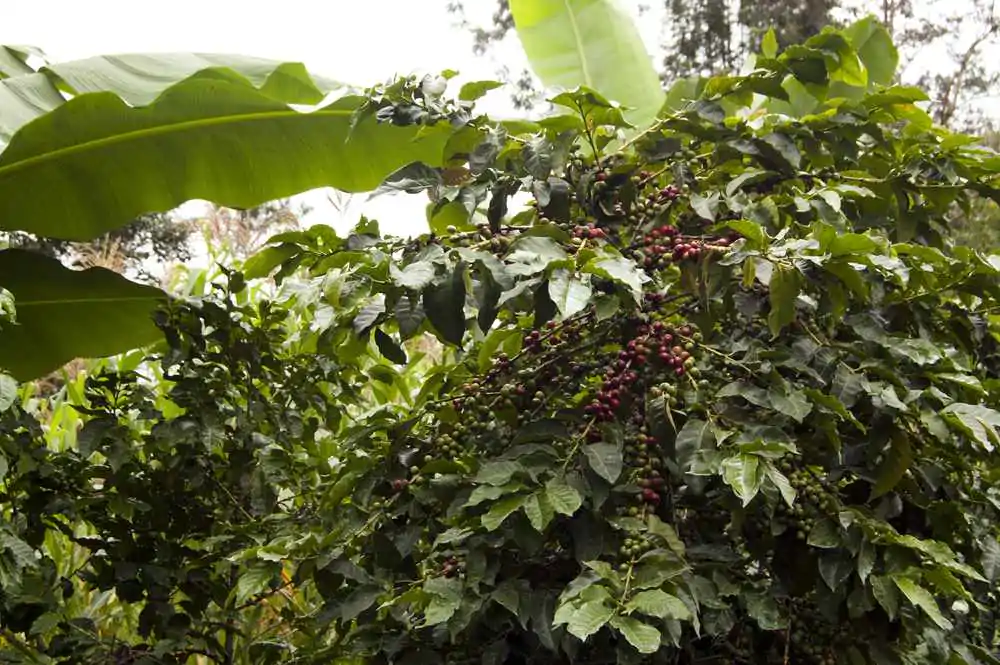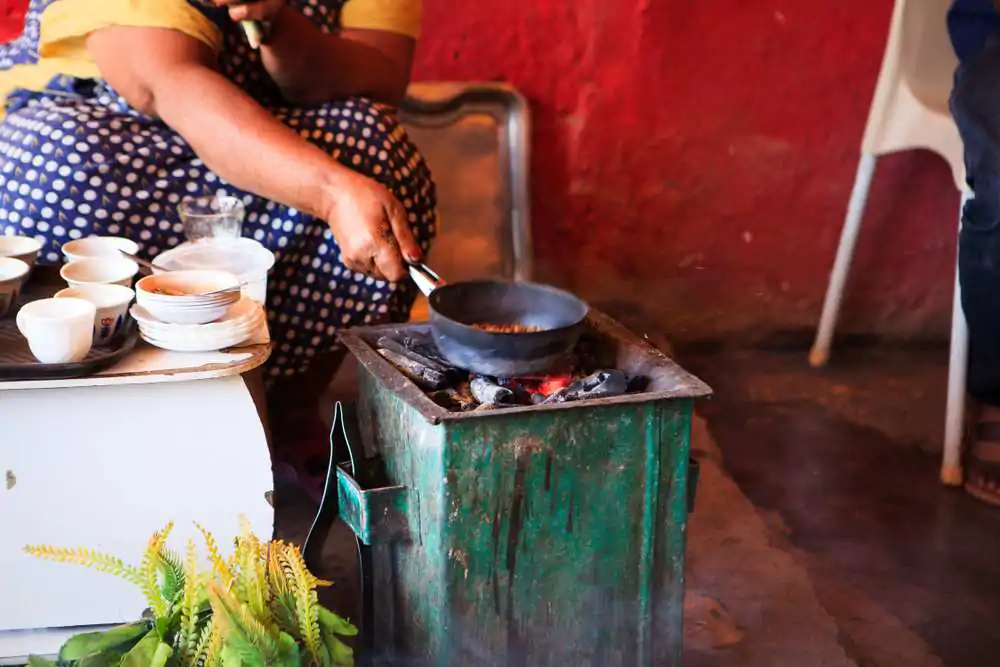Kenyan coffee enjoys a stellar reputation for its amazing quality. Today, we’ll discover the most interesting Kenya coffee facts you should know before trying it.

Renowned for its high-quality java, Kenya has carved a niche for itself in the global coffee industry. But what makes Kenyan coffee so great? In this article, we’ll go over some of the most important Kenya coffee facts every java lover must know.
While you’re here, make sure to check out our recommendations for the best Kenyan coffee brands. Let’s dive in.
- 1. Kenyan Coffee Cultivation Is Just One Century Old
- 2. Arabica Coffee Dominates Kenyan Coffee Farms
- 3. Kenya Has A Distinctive Coffee Grading System
- 4. Kenyan Coffee Prices Are Determined At Auctions
- 5. Kenya Has Five Distinct Coffee-Growing Regions
- 6. Kenya’s Landscape Contributes To The Unique Flavor Profile
- 7. Kenyan Coffee Is Rare Due To Low Production
- 8. Kenyan Coffee Is Harvested Twice A Year
- 9. Kenyan Coffee Is Mainly Wet-Processed
- 10. Kenyans Drink Traditional “Kahawa Chunghu” Coffee
1. Kenyan Coffee Cultivation Is Just One Century Old
Kenya is neighboring Ethiopia, which is considered to be the birthplace of coffee, but it wasn’t until the end of the 19th century that this country started growing these plants. In fact, coffee wasn’t even brought to Kenya from Ethiopia.
Instead, the first coffee plant in Kenya arrived from Reunion Island. The story goes that the Holy Ghost Fathers, who were French missionaries in Africa, brought around 100 beans to Kenya, among other crops they planned on cultivating.
The land around Nairobi, where their farms were located, provides ideal conditions for growing coffee plants. Within a decade, they had around 5,000 coffee trees ready to be harvested. You might also be interested in our coffee myths post.
2. Arabica Coffee Dominates Kenyan Coffee Farms
The first coffee plant that was brought from Reunion Island to Kenya was of the Arabica variety, Bourbon to be exact. In the 1950s, the original Bourbon plant was mainly replaced by freshly introduced hybrid varieties, which are still grown today.
The two most popular cultivars are SL28 and SL34, named after the research organization that developed them, Scott Laboratories. Both of these varieties are high-yielding and produce an exceptional quality cup of coffee when grown at high altitudes.
However, the aforementioned cultivars are susceptible to coffee berry disease, which is a challenge Kenya’s coffee sector faces. For that reason, two other varieties were introduced to the market: Batian and Ruiru 11. While not as exceptional as SL cultivars, these varieties have the advantage of disease immunity and can be grown at all elevations.
3. Kenya Has A Distinctive Coffee Grading System
Once milled, Kenyan coffee is carefully graded. Many factors determine coffee quality, like shape, color, and density. However, the most important factor is considered to be size, as bigger beans have more oils.
Coffee oils can help enhance the flavor and aroma. Currently, there are eight coffee grades.
The E grade stands for Elephant and consists of the largest Kenyan beans. Kenya AA grade beans are the second largest and considered superior, followed by Kenya AB. The Kenya PB category consists of peaberry beans, which contain a single coffee bean within the cherry, instead of the usual two beans.
Furthermore, we have Kenya C, TT, and T categories, all of which are small coffee beans. Finally, MH/ML grades consist of the beans that fell from the coffee plant on their own. These beans are considered to be the lowest quality, as they’re noticeably sour.
4. Kenyan Coffee Prices Are Determined At Auctions
Kenya’s 1933 Coffee Act introduced the auction system, which established a coffee pricing system based on quality. The higher the quality of coffee, the higher it’s priced.
These auctions are led by the government and take place at the Nairobi Coffee Exchange. They’re widely recognized as the most transparent way of determining prices and distribution of coffee. In fact, this system is even believed to have been an inspiration for the Cup of Excellence auctions.
5. Kenya Has Five Distinct Coffee-Growing Regions

Kenya has many coffee-growing areas, which can be grouped into five regions. The central region is considered to be the traditional coffee growing area, and it consists of farms situated on the slope of Mt. Kenya. Around 60% of all Kenyan coffee comes from this region – mainly from the Nyeri, Kiambu, Muranga, and Kirinyaga areas.
The Eastern region zones range from mountainous moorlands to semi-arid and arid areas. The Western region also has diverse physical features, given it’s situated between the slopes of Mt. Elgon and Victoria Lake.
The Great Rift Valley region has high altitudes, volcanic soils, and high rainfall, ideal for growing coffee. Coffee is a relatively new crop in this area, but it produces about 25% of the country’s Joe.
Finally, we have the coastal region, which is mostly arid but makes up for that in sunshine. Still, this region produces a very small amount of coffee compared to other Kenyan regions.
6. Kenya’s Landscape Contributes To The Unique Flavor Profile
Kenya’s climate and geography are ideal for growing coffee. Most growing regions are situated at elevations between 4,500 and 6,500 feet above sea level.
High altitudes have lower temperatures, which causes the coffee cherries to mature at a slower pace. Slow growth results in a bean that’s denser, more complex in flavor, and very aromatic.
Of course, other factors influence the taste of coffee beans, like the type of soil, sunlight, and rainfall. Kenyan coffee has an intense flavor, wine-like acidity, and a dry aftertaste. Exactly how your cup will taste depends on the region it was grown in and the roast, but generally, Kenyan coffee has prominent notes of black currant and citrus, with hints of honey, caramelized sugar, and peaches.
7. Kenyan Coffee Is Rare Due To Low Production
In the last two years, coffee production in Kenya has been sitting steadily at about 51,000 metric tons, but 30 years ago, those numbers were close to 129,000! So what happened?
First, the 1989 collapse of the International Coffee Agreement caused coffee prices to drop, which was in contrast to the rising cost of production. This made it harder for Kenyans, especially smallholder farmers, to invest in good practices and agro-inputs.
Climate change has also played a huge part in the coffee production crisis. Rising temperatures, irregular rainfall, erratic weather events, increased pests and plant diseases, and decreased water availability all unfavorably affect coffee production.
8. Kenyan Coffee Is Harvested Twice A Year
In most countries, coffee is harvested once per year. However, Kenya’s climate allows coffee plants to constantly grow all year long, allowing two annual harvesting seasons. The main harvesting season is between April and June, while the second season occurs between October and December.
9. Kenyan Coffee Is Mainly Wet-Processed
In Kenya, nearly all coffee is processed using the wet method, which involves using water to wash the skin and pulp off the cherries. Then, they’re placed in large tanks with water, where they ferment for about 12 hours before being dried in the sun.
If you want to know more about different methods, check out our article detailing how coffee is processed.
Farmers prefer wet processing over other methods, as it’s faster and much less labor intensive. At the same time, it also guarantees a cleaner and more consistent flavor. This is part of the reason why Kenyan coffee tastes so good.
10. Kenyans Drink Traditional “Kahawa Chunghu” Coffee

Interestingly enough, Kenyan people mostly prefer tea to coffee. If they do choose the latter, it’s often served as Kahawa Chunghu, which means bitter coffee. Men in particular are more likely to drink this java.
This traditional drink is brewed in a brass kettle over a charcoal stove. To make it bitter, the drink is mixed with spices like cardamom, ginger, and cinnamon. Then, it’s served with mahamri, kaimati, and similar local pastries.
